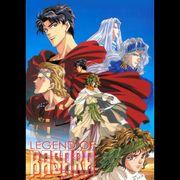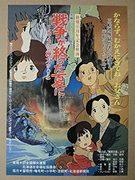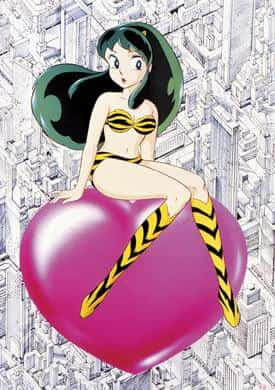A thorough review of Yumi Tamura's "BASARA" original image video!

Yumi Tamura's masterpiece "BASARA": an epic journey from futuristic sci-fi manga to OVA■ Public MediaOVA ■ Original Mediacomics ■ Release dateAugust 20, 1993 ■Release and salesPony Canyon ■Frequencieshalf an hour ■ Number of EpisodesEpisode 1 ■Original StoryYumi Tamura ■ DirectorHiroyuki Yokoyama ■ ProductionShogakukan, Pony Canyon ■Works©1993 Yumi Tamura/Shogakukan, Pony Canyon ■ Story300 years have passed since the collapse of civilization in Japan. The people suffer under the oppression of a tyrant. Meanwhile, Tatara, who was prophesied to be the "child of destiny" who would save them, is killed by the Red King. So his twin sister Sarasa calls herself Tatara and stands up for the hopes of the people. ■ExplanationThis video is an adaptation of manga artist Tamura Yumi's futuristic sci-fi manga "BASARA," faithful to the original. It was produced to commemorate the 38th Shogakukan Manga Award. It is a fictional war story set in a post-civilization Japan, and is characterized by its large scale, which is rare for a girls' manga, and the human drama in which various characters intertwine. It was also made into a TV anime in 1998. ■Cast・Sarasa/Noriko Hidaka ・Shuri/Kazuhiko Inoue ・Ageha/Kento Shiozawa ・Asagi/Nozomu Sasaki ・Nagi/Sho Hayami ■ Main staff・Original story: Yumi Tamura ・Director: Hiroyuki Yokoyama ・Composition: Hiroyuki Yokoyama ・Production: Shogakukan, Pony Canyon ■ Main Characters A girl from Byakko Village. After her twin brother Tatara, who was prophesied to be the child of destiny, is killed, she begins to live as Tatara. She falls in love with Shuri, unaware that she is the one she wants to take revenge on. ■ Related works・"LEGEND OF BASARA" The appeal and reputation of "BASARA"Yumi Tamura's "BASARA" is known as a futuristic science fiction manga, and its grand worldview and deep human drama have captivated many fans. This work was made into a visual animation (OVA) in 1993, which brought out the best of the original work and gained a new fan base through its visual expression. The story of "BASARA" is set in Japan after the collapse of civilization. 300 years later, Japan is under the oppression of a tyrant and the people are suffering. Amidst all this, a tragedy occurs when Tatara, who was prophesied to be the child of destiny, is killed by the Red King. However, the story of how Tatara's twin sister Sarasa takes over the name of Tatara and rises up as the hope of the people deeply moves viewers. The greatest appeal of this work is its epic scale and intricately drawn human drama. It adopts the fictional war story genre, which is rare for a girls' manga, and while depicting battles and political maneuvering, it also delves deeply into the feelings and relationships of the characters. In particular, the relationship between Sarasa and Shuri depicts the complex emotions that waver between revenge and love, leaving a strong impression on viewers. The production staff of the OVA version was also excellent, and director Hiroyuki Yokoyama faithfully reproduced the worldview of the original work while taking advantage of the expressive power of video. The cast is also impressive, and the performances of the voice actors, such as Noriko Hidaka as Sarasa and Kazuhiko Inoue as Shuri, bring out the charm of the characters. The background and influence of "BASARA""BASARA" was serialized by Yumi Tamura in "Bessatsu Shojo Comic" from 1990 to 1998. After the serialization ended, it won the 38th Shogakukan Manga Award, and an OVA was produced to commemorate this. This OVA was produced to reflect the popularity and acclaim of the original work, and lived up to the expectations of fans. The OVA was produced jointly by Shogakukan and Pony Canyon. The collaboration between the two companies allowed them to faithfully reproduce the worldview of the original work while maximizing its appeal as a visual work. The success of the OVA also led to a TV anime adaptation in 1998, providing an opportunity to spread the appeal of "BASARA" to an even larger audience. The influence of "BASARA" has gone beyond the boundaries of manga and anime, influencing many creators. In particular, the fact that it showed the potential of science fiction and war stories in girls' manga has had a major influence on later works. In addition, its deep character portrayals and emphasis on human drama are elements that can be seen in many modern works. Character Analysis of "BASARA"Each character in "BASARA" has a deep background and personality that enriches the story. In particular, the relationship between Sarasa and Shuri symbolizes the central theme of the work. Sarasa is a young girl from Byakko Village who takes on the name Tatara after her twin brother, who was prophesied to be the child of destiny, is murdered. Her actions, torn between revenge and hope, evoke strong empathy from viewers. Sarasa's growth and change are depicted as the story progresses, deeply moving viewers. Shuri is the youngest son of the King of Japan and the Red King who is in charge of the Western Provinces. After he was born, he received a prophecy that he would bring misfortune to his wife, and was branded with a slave mark on his back. Although he has a self-righteous personality, Shuri is a strategist and has charisma that draws people in. His relationship with Sarasa is torn between revenge and love, leaving viewers with complicated emotions. Ageha is the sole survivor of the nomadic "Wind People," known as the "proud blue aristocrats of the desert." While cooperating with the Tatara army, he usually takes refuge with the traveling performing group "Madame Butterfly Troupe" as a dancer called Kicho. Ageha's character is depicted as someone torn between freedom and restraint, evoking deep sympathy from the viewer. Visual expression and music of "BASARA"The OVA version of "BASARA" also has distinctive visual expression and music. Director Yokoyama Hiroyuki faithfully reproduces the worldview of the original work while taking advantage of the expressive power of video. In particular, the beauty and power of the images are striking in the battle scenes and scenes depicting the characters' feelings. Music is also an important element that enhances the appeal of "BASARA." The music in the OVA version reflects the atmosphere of the original work and leaves a strong impression on the viewer. In particular, the music in battle scenes and moving scenes plays a role in enhancing the viewer's emotions. Related works and recommendations for "BASARA"A related work to "BASARA" is "LEGEND OF BASARA". This work was produced as a sequel to the original work, and delves deeper into the story of Sarasa and Shuri. "LEGEND OF BASARA" is also characterized by its grand world view and deep human drama, and has received high praise from fans. The reasons why I recommend "BASARA" are as follows.
"BASARA" is a masterpiece that depicts a grand worldview and deep human drama, and is a work that deeply moves viewers. The OVA version also maximizes the appeal of the original work and has gained a new fan base. If you have not seen "BASARA" yet, please experience this work. |
<<: A thorough review of "8 MAN AFTER"! A legendary hero anime brought back to life in modern times
Recommend
Spider-Man 3 post-credits scene leaked, Doctor Strange 2 trailer released
"Spider-Man: No Homecoming", which is h...
The director of the superhero movie "Venom 3" has confirmed that he will be the screenwriter and producer of the previous film
According to Deadline's exclusive report, Kel...
Sega mobile game adapted "Blue Knights" TV animation new trailer confirmed to start broadcasting on January 6, 2021
Sega's famous mobile game "Blue Knights&...
Nezha surpasses Wolf Warrior 2 in North America, becoming the second Chinese-language film to break $3 million after The Wandering Earth
On September 16, according to media reports, as o...
Peking University Dragon Mother reports "Nezha 2": It promotes violence! Not suitable for children to watch
As the saying goes, "Fame brings trouble&quo...
The appeal and evaluation of "Uma Musume Pretty Derby" Season 1
Uma Musume Pretty Derby - A story of Uma Musume w...
The appeal and reviews of "Mechakko Dotakon": An anime experience not to be missed
Mechakko Dotakon - Looking back on the nostalgic ...
Galaxy Whirlwind Braiger: The appeal and reputation of the classic robot anime
Galaxy Whirlwind Bryger: A look back at the explo...
The appeal and evaluation of "My-Otome 0~S.ifr~": The unknown depth of the story
My-Otome 0 ~S.ifr~ Review and details Overview &q...
Guardians of the Galaxy Vol. 3 box office estimates released: opening weekend not as good as previous film
The first box office tracking estimates for Marve...
Death Note live-action drama to be directed by Stranger Things director
According to Deadline, the Duffer Brothers, direc...
Blood Blockade Battlefront Back2Back 5 Review: What's the appeal of the new anime DVD bundle?
Blood Blockade Battlefront Back2Back 5: A new bat...
The Witcher series Keira actor responds to controversy: Sorry I'm not that sexy
In the third season of The Witcher, Safiya Ingar ...
The appeal and reviews of "Polar Bear Gets on a Boat": A thorough analysis of the adventures of a small polar bear
"Little Polar Bear: A Shirokuma-kun Gets on ...
Simon Pegg: Star Trek 4 is hopeless
According to foreign media reports, actor Simon P...









